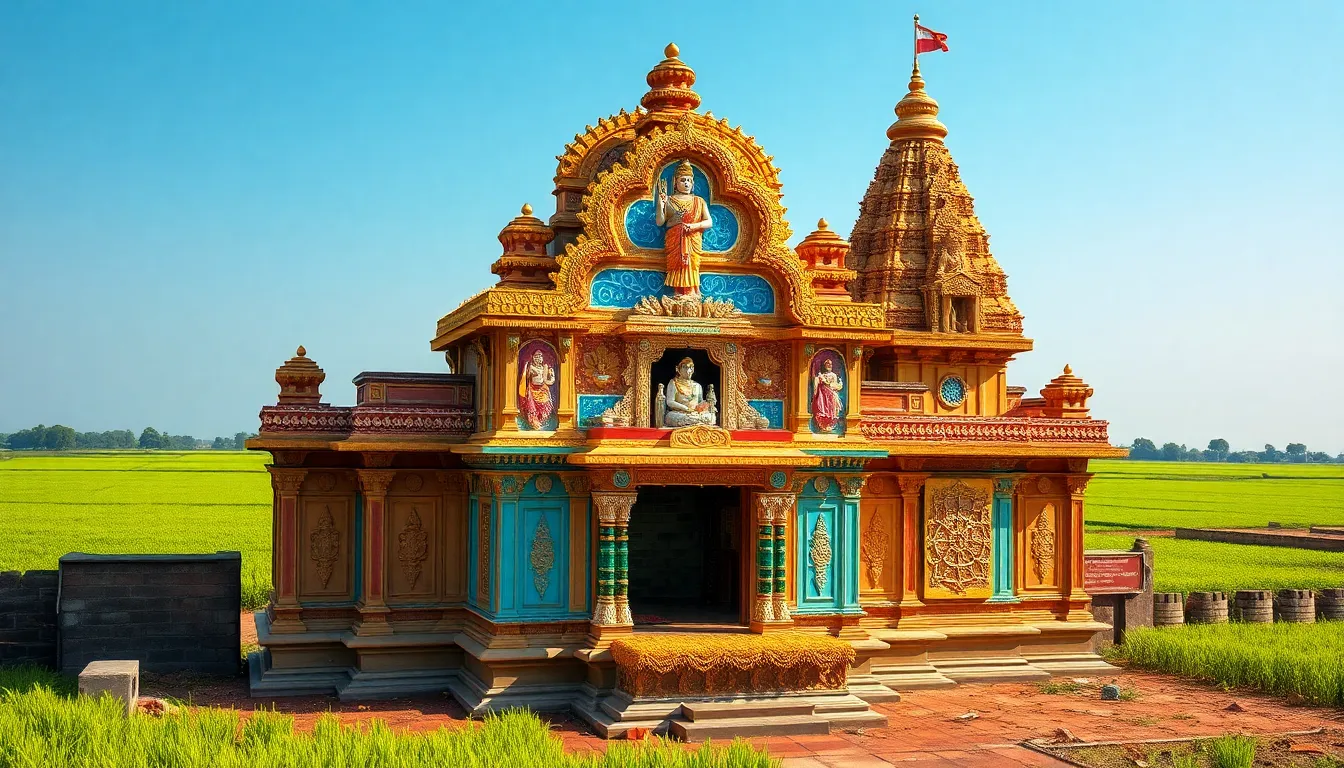Table of Contents
ToggleIn the vibrant tapestry of Indian culture, few figures shine as brightly as Gowthalamma. This beloved deity, often depicted with a playful spirit and nurturing presence, captures the hearts of many. But who exactly is Gowthalamma? She’s not just a figure of worship; she’s a symbol of strength, fertility, and abundance, making her the go-to gal for anyone seeking a little divine intervention in their lives.
What Is Gowthalamma?
Gowthalamma represents an important figure in Indian culture, embodying qualities like strength, fertility, and abundance. She serves as a nurturing spirit, providing divine guidance and support to her devotees. Traditionally, she is worshipped in various rituals and festivals, where people express gratitude for her blessings.
Her role extends beyond just being a deity; she symbolizes the agricultural surplus and the prosperity of the land. Many followers believe that by honoring Gowthalamma, they invite good fortune and protection for their families and crops. Temples dedicated to her often become centers for community gatherings, reinforcing her significance in social and spiritual life.
People offer prayers, flowers, and traditional foods at her shrines, creating a vibrant atmosphere that reflects devotion. It’s common to see devotees gather during harvest festivals, celebrating the fruits of their labor and seeking her blessings for future yields.
Gowthalamma is also associated with various legends passed down through generations, highlighting her playful nature alongside her nurturing characteristics. Cultural celebrations often feature stories that illustrate her interventions during challenging times, emphasizing her role as a protector.
In essence, Gowthalamma encapsulates a blend of cultural values and spiritual beliefs. She stands as a symbol of hope, often representing the resilience of individuals and communities in the face of adversity.
Historical Significance

Gowthalamma holds deep historical significance in Indian culture, recognized for her nurturing presence and protective qualities. Devotees celebrate her role as a guiding force in agriculture and family welfare.
Origins of Gowthalamma Worship
Origins of Gowthalamma worship trace back to agricultural communities in Southern India. She emerged as a symbol of fertility and abundance, where cultivation influenced community life. Early worship practices focused on ensuring bountiful harvests for families. Rituals developed around her, affirming her importance in everyday life. Historical references indicate she is revered in various regional festivals, marking significant agricultural milestones.
Key Historical Events
Key historical events underscore Gowthalamma’s role in local traditions and social identity. Numerous temples dedicated to her have stood for centuries, emphasizing her enduring influence. Celebrations during harvest seasons often coincide with her festivals, reinforcing agricultural gratitude. Historical texts document miracles attributed to her, linking her with periods of prosperity and protection. Local legends highlight instances where believers attribute their survival and success to her divine interventions.
Cultural Practices
Gowthalamma’s worship encompasses various rituals and traditions, reflecting her significance. Devotees engage in activities aimed at honoring her presence and seeking blessings. Offerings of fresh produce, flowers, and incense often accompany prayers. Special ceremonies frequently occur at sunrise or sunset, maintaining a spiritual connection. Many families initiate their agricultural work with special prayers to Gowthalamma, believing her guidance ensures successful yields. Collectively, these rituals strengthen community bonds, enhancing their shared devotion.
Rituals and Traditions
Rituals dedicated to Gowthalamma incorporate unique customs. Each region has distinctive practices, yet common elements create a unified celebration. Offerings are placed before her idol in temples, symbolizing gratitude for bountiful harvests. Devotees chant specific mantras that highlight her nurturing qualities. Weekly gatherings occur in many villages, where families unite to perform collective prayers. Simple agricultural tasks align with these gatherings, reinforcing respect for the earth and its produce. Such traditions embody the vibrant connection between spirituality and daily life.
Festivals Celebrating Gowthalamma
Festivals celebrating Gowthalamma showcase vibrancy and joy within communities. Harvest festivals mark key events during the agricultural calendar, typically falling after the monsoon season. Colorful decorations adorn temples and homes, creating a festive atmosphere. Traditional dance and music performances often feature prominently in celebrations. Many individuals participate in community feasts, where shared meals symbolize togetherness. Each festival serves as a reminder of blessings and the importance of respecting nature’s cycles. Collective gratitude and joyful expressions define these celebrations, emphasizing the deep cultural roots tied to Gowthalamma’s worship.
Gowthalamma in Modern Times
Gowthalamma remains a vital figure in contemporary society, continuing to inspire devotion and community spirit. Her worship adapts to modern contexts while retaining its traditional essence.
Contemporary Worship Practices
Contemporary worship of Gowthalamma reflects a blend of ancient traditions and current practices. Devotees gather in local temples for regular prayers, offering seasonal fruits and flowers. Many families incorporate her blessings into their daily routines, often beginning agricultural work with rituals dedicated to her. Specific ceremonies occur during sunrise or sunset to capture the sacred atmosphere. Digital platforms have also played a role, allowing followers to participate in virtual ceremonies and share their experiences. Engaging all ages, song and dance are common features during events that celebrate her blessings.
Influence on Local Communities
Communities thrive around the worship of Gowthalamma, fostering unity and cooperation. Local celebrations attract people from nearby villages, promoting a strong sense of belonging. Many community members collaborate to organize vibrant festivals, where attendees share traditional foods and cultural performances. These gatherings strengthen social ties while emphasizing gratitude for agricultural harvests and nature’s bounty. By honoring Gowthalamma, communities cultivate not only agricultural prosperity but also resilience. Educational programs often emerge from these celebrations, encouraging younger generations to engage with their cultural heritage.
Gowthalamma’s enduring legacy continues to inspire devotion and unity among her followers. Her vibrant festivals and rituals foster a strong sense of community while honoring agricultural traditions. As a symbol of strength and abundance, she remains a beacon of hope and resilience for many.
In today’s world, her worship adapts seamlessly to modern contexts, ensuring that both young and old can connect with their cultural roots. Whether through local gatherings or virtual ceremonies, the spirit of Gowthalamma thrives, reinforcing the importance of gratitude and respect for nature. Her influence extends beyond spirituality, enriching lives and nurturing communal bonds that stand the test of time.




